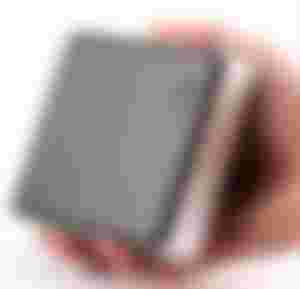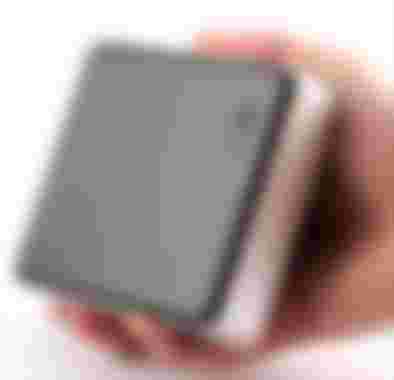
*image source google - bajtbox.com
Slightly older people, like me, have had the opportunity to witness the development and evolution of home computers, from the very beginning to the present day. My first home computer, if it can be categorized as a home computer at all, was the Commodore 64. For me and my friends at that age, it was a great gaming platform. Over time, as technology evolved, home computers began to enter our homes, as they are today. My first such computer was the pc 386, then it was the turn of the 486, the pentium, and so on to this day, as computers progressed so did I procure new and more powerful models. One of the significant leaps in the use of computers was the appearance of laptops at affordable prices.
As far as I can tell from their children, who are already adults with their jobs, their generation is mostly turned to laptops. Personally, I have always preferred to work with the help of classic desk top computers. The advantage that laptops have over desk top computers is primarily in their size and high mobility, as well as autonomy in operation. However, from my point of view, their disadvantages are that their price is much higher than desk top computers, as well as their lifespan, so in my opinion it is more economical to work on a desk top computer if there are conditions for such a thing. You can find a simple example of this in my family. My wife and I work on desktops and my children have been working on laptops since they started working. Our desk top computers are 7 years old and still work great, while my children changed 3 laptops during that time. This is not a small expense, especially if we take into account that in our country laptops are 2x more expensive than desktops. It is important to note that here we are talking about computers that are not faced with demanding tasks such as image processing, graphics, etc .. but ordinary tasks that include excel word and google services.
For all these reasons, I was very pleased with the progress of technology in the direction of the production of mini PC desk top computers.
I believe that in about ten years, the standard size of the case will remain only with some particularly demanding computers and maybe not even.

Mini PC Buying Guide
For anyone planning to get a new desk top computer, these guidelines may be helpful
Why a mini PC?
The Mini PC has a number of advantages over a classic desktop computer or laptop.
In addition to taking up drastically less space, less than laptops and notebooks, it also consumes less power and produces less noise. The Mini PC is more powerful than a laptop because it has no worries about battery storage.
In addition to the fact that you can use a TV instead of a monitor, some models of mini PCs and monitors support mounting a mini PC on the back of the monitor. So your monitor looks like an all-in-one PC.
The Mini PC can offer the average user everything like a classic desktop computer - only in a smaller and quieter edition.
Unfortunately, for now, you can forget about hardcore gaming and perfecting advanced Photoshop skills on a mini PC until the technology advances a bit.
Types of mini PCs
There are 3 types of mini PCs:
ready mini PC
so-called *bare bones* to be assembled
mini PC in a stick
If you don't have the experience or nerves to stack your little box, a mini PC is ready for you. It has all the components and the OS installed and is ready to use as soon as you take it out of the box.
The Bare bones mini PC comes with a case, motherboard and processor, and the hard drive and RAM must be purchased and assembled separately. You can buy new components or use old ones. This kind of mini PC is cheaper than the finished one in the beginning, but the final price should also include the costs of other components. Bare bones mini PC provides a little more freedom because you can decide what kind of hard drive and RAM you want to put and you can adapt them to your needs and habits of using the computer.
The mini PC in the stick is characterized by maximum mobility - you can transfer and use it simply as a USB stick. Part of the mini PC in the stick is based on the Android operating system, while others use Windows or some of the other alternative OSes. And while such a device has its advantages, do not expect great power from it.
Peripherals
You can connect all the peripherals to the mini PC - keyboard, mouse and monitor. All peripherals and other accessories are purchased separately, even with ready-made mini PCs. This is the case with every desktop computer, so it makes no sense to look at it as a drawback. What you need to watch out for are the exits. The Mini PC typically comes with USB outputs and a mini HDMI output for connecting monitors. The keyboard and mouse must use USB, so if you have versions with PS / 2 output, you will need a USB adapter. When buying, be sure to check what outputs the mini PC has, what the outputs are on the monitor and what cables you need to connect the monitor to the mini PC. As long as you know what and how you can connect, there are no limits. Wired or wireless mouse and keyboard, speakers, headphones, FHD monitor ... let your imagination run wild.


Hello there, had a problem with my computer recently, and I wasn't sure where to turn for help. I found My Computer Works online, but I wanted to make sure they were a good choice, I checked out their reviews on My Computer Works reviews. There were a lot of different experiences shared some people said they fixed issues quickly, while others had complaints about the service. It really helped me weigh the pros and cons before deciding.